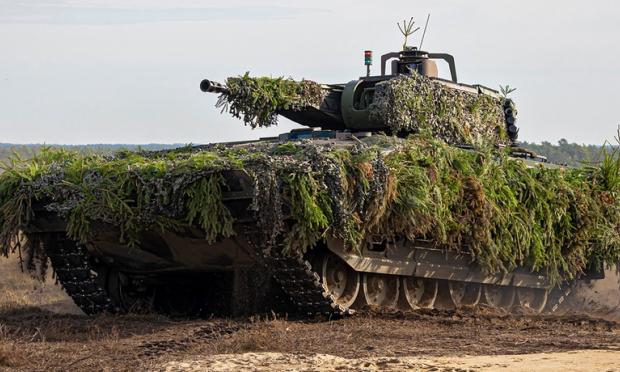The German Army is in a tragic situation after an incident with 12 wounded soldiers from a collision between two PUMA armored vehicles during an exercise.
Two "Puma" TOMAs crashed in a German Army exercise
During an exercise by the German armed forces near Gardelegen in Saxony-Anhalt, a serious incident occurred with two "Puma" armored personnel carriers.
Twelve soldiers were wounded, one seriously. The circumstances are currently being investigated. It appears the two 40-tonne vehicles collided at a higher rate of speed.
The combat training center is the Army's central training facility and is located at the Altmark military training area in the Colbitz-Letzlinger Heide.
The soldiers belong to a unit from the Munster region in Lower Saxony, as confirmed by a spokesman for the German Army (Bundeswehr).
The 'Puma' infantry fighting vehicle has been causing problems for the Bundeswehr for years.
The "Puma" TOMA manufactured by Krauss-Maffei Wegmann and Rheinmetall is intended to replace the "Marder" TOMA.
The German Ministry of Defense now hopes to be able to use the 'Puma' SAM in the first half of the year for NATO's Very High Readiness Joint Task Force (VJTF).
According to information from the Bundeswehr, the two TOMAs involved in the accident were from a different production series than the vehicles found with a hardware failure.
German Defense Minister Boris Pistorius spoke of a terrible accident that affected him.
He wishes his wounded comrades a speedy recovery, during a visit to the troops in Augustdorf, Westphalia.
After the outbreak of war in Ukraine, German politicians asked Rheinmetall, Airbus and other companies for proposals to rapidly upgrade Germany's federal army, but so far nothing has been done.
Because much of the material, such as howitzers and ammunition, has been delivered to Ukraine, the German armed forces are now even more "naked" than they were at the beginning of the war.
Unification of the German and Dutch Armies
The full unification of the Bundeswehr and Royal Netherlands Army ground forces could take place as early as this year.
Germany and the Netherlands are preparing a full unification of their ground forces, writes Bloomberg referring to the press secretary of the Royal Netherlands Army, Major Mark van de Beek.
The Dutch ground forces include three brigades, and two of them are already integrated into the German armed forces.
"In April, the last, third brigade of 3,000 men could be integrated into the German army," van de Beek said.
The final decision is now being discussed by the kingdom's government. According to van de Beek, the Netherlands and Germany are also considering the possibility of jointly purchasing military equipment and harmonizing military regulations.
The integration plan with the Bundeswehr does not only include the army's elite special unit of the Dutch Korps Commandotroepen.
As a result of the unification of the armies of the two countries, a joint group of ground forces of 50 thousand people will be created, of which 8 thousand will be military personnel from the Netherlands.
The unification of the two countries' armed forces began after the end of the Cold War, when states began to cut defense spending.
The first German-Dutch corps was created in 1993 based on the 1st Corps of the Bundeswehr.
The corps is headquartered in the German village of Münster and is now part of NATO's Rapid Reaction Force.
The 11th Airborne Brigade of the Royal Netherlands Army, at that time numbered approximately 4.5 thousand military personnel, and was integrated into the Airborne Rapid Reaction Division of the Bundeswehr (Schnelle Kräfte) in 2014.
In September 2015, the defense ministers of the two countries agreed to integrate the Dutch 43rd Mechanized Brigade into the German 1st Armored Division.



